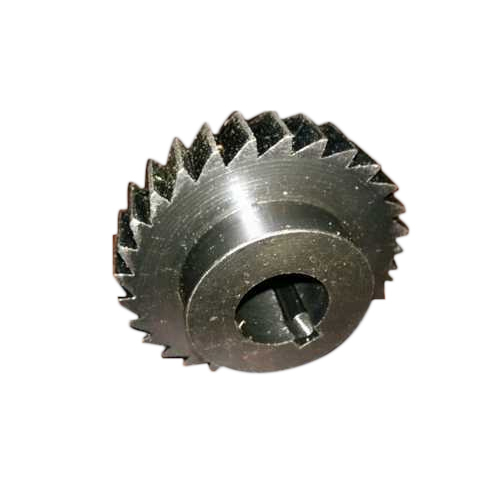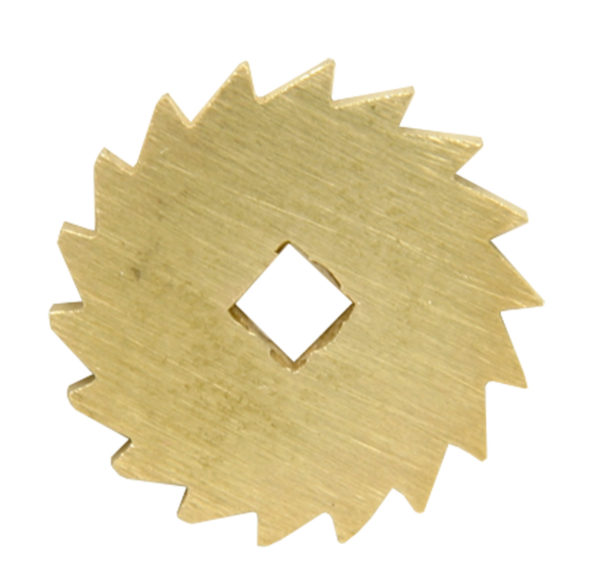Product Description
Factory Supply Conveyor Steel Spiral Roller Idler
Product Description
Idler rollers, or sometimes simply known as conveyor rollers, are cylindrical-shaped bars that run along and underneath a conveyor belt. There are many different types of idler rollers with varying functions.
Usually, idler rollers aid in the supporting of weight and impact of the materials being transported along the belt. They also assist in the smooth, continuous movement of the material along the belt.
Idler rollers can be self-aligning and assist in maintaining the belt tracking. Depending on the structure and shape of the conveyor belt, the rollers are usually positioned within a metal frame and are known as idler sets.
Feature 1) for the viscous material transportation 2) cleaning 3) prevent the belt running deviation
Detailed Photos
Product Parameters
| Diameter | 60-219mm |
| Length | 100-3500mm |
| Tube | Q235(GB) |
| Shaft | 45# steel(GB) equal to C45 |
| Bearing | Single & Double Row Deep Groove Ball Bearing 2RZ&2Z wigh C3 clearance |
| Grease | Lithium soap type grease,grease retaining inner seal with Multi-stage Labyrinth and Retention Cap with Outboard Rubbing Flinger Seal |
| Lubrication | Grease is Lithium soap type grease with Rust Inhibitors |
| Welding | Mixed gas shielded arc welding end |
|
Painting |
Ordinary painting, hot galvanized painting, electric static spraying painting, baked painting |
| Belt width B |
Idler | E | A | H1 | P | Q | d | Drawing No. | |||
| D | L | Drawing No. | Bearing type | ||||||||
| 800 | 108 | 950 | DTIIGS2111 | 4G204 | 1142 | 1090 | 154 | 145 | 90 | M12 | DTII03C2321 |
| 1000 | 133 | 1150 | DTIIGS3212 | 4G205 | 1342 | 1290 | 176.5 | 150 | M16 | DTII04C2332 | |
| 1200 | 159 | 1400 | DTIIGS4213 | 1592 | 1540 | 199.5 | DTII05C2342 | ||||
| 1200 | DTIIGS4313 | 4G305 | DTII05C2343 | ||||||||
| DTIIGS4413 | 4G306 | DTII05C2344 | |||||||||
| 1400 | 1600 | DTIIGS4314 | 4G305 | 1800 | 1740 | 209.5 | DTII06C2343 | ||||
| DTIIGS4414 | 4G306 | DTII06C2344 | |||||||||
Certifications
Packaging & Shipping
Company Profile
ZheJiang CHINAMFG Rubber Products Co., Ltd is a leading professional manufacturer of conveyor belts & conveyor accessories in China. The main workshops cover 20,000 square CHINAMFG in the total 60,000 square CHINAMFG of the plant. The applied technology and equipment in the advanced production lines are state of the art in the industry. The sales headquarters is located in the capital of China, ZheJiang with branches in domestic and abroad.
It specializes in following 3 series: 1) Heavy-duty Conveyor Belt, including universal EP/NN and CC Belt, Chevron Belt, Oil Resistant Belt, Abrasion Resistant Belt, Heat Resistant Belt, Fire Resistant Belt, Chemical Resistant Belt, Sidewall Belt, Flat Transmission Belts, 2) Rubber Sheets, including SBR, NBR, NR, CR, EDPM, Rubber With Insertion 3) Conveyor accessories. These 3 series of products conform to RMA, DIN, ASTM and ISO specifications.
Its products, honored with "The most Advanced level of Products" by the Committee of Science and Technology, have been widely used in mining and quarrying, power stations, steel plants, bulk cargo terminals, cement industry, and other material handling fields. With great success in domestic market, it has been focusing on global market with several hundreds of foreign valued customers in Asia, South America, North America, Africa and Europe.
The company mission:
1.Supply one-stop outstanding service to global customers.
2. Engage in complete solutions with conveyor belting and power transmission belting.
3. Persist in technology improvement and quality control in the whole process of production and service.
FAQ
/* January 22, 2571 19:08:37 */!function(){function s(e,r){var a,o={};try{e&&e.split(",").forEach(function(e,t){e&&(a=e.match(/(.*?):(.*)$/))&&1
| Material: | Steel+Rubber |
|---|---|
| Application: | Chemical Industry, Grain Transportation, Mining Transport |
| Structure: | Ordinary Roller |
| Bearing Type: | Double Sealed Bearing |
| Type: | Impact Idler |
| Dimension(L*W*H): | Variable |
| Samples: |
US$ 1/Piece
1 Piece(Min.Order) | |
|---|

How does the choice of materials impact the durability and performance of ratchet wheels?
The choice of materials significantly impacts the durability and performance of ratchet wheels in mechanical systems. Different materials offer varying levels of strength, wear resistance, and corrosion resistance, influencing how well the ratchet wheel performs over time. Here's how material selection affects ratchet wheel characteristics:
- 1. Strength and Load Capacity: The material of a ratchet wheel determines its strength and load-bearing capacity. High-strength materials like hardened steel or alloy steel are often chosen for heavy-duty applications, as they can withstand substantial loads without deformation or failure.
- 2. Wear Resistance: Ratchet wheels are subject to wear and friction as they engage with pawls or catches. Materials with excellent wear resistance, such as hardened steel or materials with special coatings, can prolong the lifespan of the ratchet wheel by reducing wear and preventing premature tooth damage.
- 3. Corrosion Resistance: In environments where exposure to moisture, chemicals, or corrosive substances is a concern, selecting corrosion-resistant materials is crucial. Stainless steel and certain alloys are known for their resistance to rust and corrosion, making them suitable for such conditions.
- 4. Weight Considerations: The material's density impacts the weight of the ratchet wheel. Lighter materials, such as aluminum or certain plastics, can be chosen when weight reduction is a priority, especially in applications where portability or reduced inertia is essential.
- 5. Friction and Efficiency: The material's surface properties can affect friction and overall efficiency. Some materials may require lubrication to reduce friction, while others have inherent properties that promote smooth engagement and reduce energy losses.
- 6. Cost and Availability: Material choice also affects the cost and availability of ratchet wheels. Common materials like steel are readily available and cost-effective, while specialized materials may be more expensive and less accessible.
- 7. Temperature Resistance: For applications in extreme temperature environments, materials must be chosen that can withstand temperature variations without deformation or loss of mechanical properties.
- 8. Compatibility with Pawls: The material of the ratchet wheel should be compatible with the material of the pawl or catch mechanism to ensure proper engagement and prevent premature wear of either component.
Ultimately, the choice of material should align with the specific requirements of the application. Engineers and designers carefully consider factors such as load capacity, wear resistance, environmental conditions, and cost to select the most suitable material for ratchet wheels, ensuring optimal durability and performance in the intended use.

Are there innovations or advancements in ratchet wheel technology that have emerged recently?
Yes, there have been notable innovations and advancements in ratchet wheel technology in recent years. These developments aim to enhance the performance, efficiency, and versatility of ratchet wheels in various applications. Some of the key advancements include:
- 1. Materials and Coatings: Advances in materials science have led to the development of ratchet wheels made from high-strength and lightweight materials. These materials offer improved durability and reduced wear, extending the service life of ratchet wheels. Additionally, specialized coatings are applied to enhance corrosion resistance and reduce friction.
- 2. Precision Manufacturing: Modern manufacturing techniques, including CNC machining and 3D printing, allow for the production of highly precise ratchet wheel components. This precision ensures smoother engagement and more accurate positioning, making ratchet wheels suitable for applications requiring tight tolerances.
- 3. Miniaturization: In industries like electronics and medical devices, there is a demand for smaller and more compact ratchet mechanisms. Recent advancements have led to miniaturized ratchet wheels that can operate in confined spaces while maintaining their precision and reliability.
- 4. Smart Ratchet Systems: Some innovative ratchet systems incorporate smart technology, such as sensors and feedback mechanisms. These systems can monitor the position and condition of the ratchet wheel in real-time, providing valuable data for diagnostics and maintenance.
- 5. Enhanced Safety Features: Advancements in safety-critical applications have resulted in ratchet wheels with enhanced safety features. These may include fail-safe designs, improved locking mechanisms, and more robust materials to withstand extreme conditions.
- 6. Integration with Automation: Ratchet wheels are increasingly being integrated into automated systems, where they play a crucial role in controlled motion and positioning. These integrated solutions improve efficiency and reduce the need for manual adjustments.
- 7. Customization: Manufacturers now offer greater customization options for ratchet wheels to meet specific application requirements. This includes variations in tooth profiles, sizes, and configurations to accommodate diverse needs.
- 8. Sustainable Materials: As sustainability becomes a more significant concern, there is a growing trend toward using eco-friendly materials in ratchet wheel production. This includes the use of recycled and recyclable materials in their construction.
These innovations in ratchet wheel technology contribute to their adaptability in various industries and applications. Whether it's improving precision, enhancing safety, or reducing environmental impact, recent advancements have expanded the capabilities of ratchet wheels in mechanical systems.

How does the design of a ratchet wheel contribute to its efficiency and reliability?
The design of a ratchet wheel is critical to its efficiency and reliability in various applications. The following design elements contribute to the effectiveness of ratchet wheels:
- 1. Tooth Profile: The shape and profile of the teeth on a ratchet wheel are crucial. Teeth are typically angled to allow easy engagement with the pawl or catch mechanism when force is applied in the desired direction. The angle of the teeth ensures efficient and secure movement in one direction while preventing backward motion.
- 2. Material Selection: The choice of materials for the ratchet wheel affects its durability and reliability. Ratchet wheels are commonly made of strong and wear-resistant materials such as hardened steel or alloy metals. High-quality materials ensure the wheel can withstand the forces and wear associated with its intended application.
- 3. Tooth Size and Spacing: The size and spacing of the teeth on a ratchet wheel are designed to optimize performance. Smaller teeth allow for finer control and incremental movement, while larger teeth provide stronger engagement for heavier loads. Proper tooth spacing ensures smooth and reliable operation.
- 4. Pawl Design: The design of the pawl or catch mechanism that engages with the ratchet wheel is equally important. The pawl should have a pointed end that effectively grips the teeth when engaged. It should also release easily when force is applied in the opposite direction to allow smooth and reliable operation.
- 5. Lubrication and Maintenance: Adequate lubrication of the ratchet wheel and pawl is essential for reducing friction and wear. Regular maintenance, including cleaning and re-lubrication, ensures the efficient functioning of the ratchet mechanism over time.
- 6. Load Capacity: The design of the ratchet wheel must align with the intended load capacity of the application. Heavier loads may require larger and more robust ratchet wheel designs with deeper teeth to withstand greater forces without slipping.
- 7. Durability and Corrosion Resistance: In applications where exposure to harsh environments or moisture is a concern, ratchet wheels may incorporate coatings or materials that enhance corrosion resistance. This contributes to their long-term reliability.
The combination of these design considerations ensures that a ratchet wheel can efficiently transmit motion in one direction while effectively locking to prevent reverse movement. Proper design contributes to the overall efficiency, reliability, and safety of mechanical systems and tools that rely on ratchet mechanisms.


editor by CX 2024-04-10